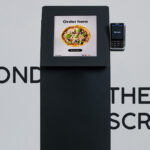Published by
Here’s how AI can be used to improve customer experiences in QSRs, from reducing wait times to ensuring the best items are always on the menu.
We’ve seen an explosion of news surrounding artificial intelligence (AI). Large fast-food chains such as Chick-fil-A, Wendy’s, and Taco Bell raced to apply the new tech, implementing AI bots in their restaurant operations.
AI arrived at just the right time for the QSR industry, as inflation, supply chain issues, and labor shortages impacted businesses. New AI tools are making it possible to tackle these challenges via the new powers of automation and personalization.
AI is likely to be implemented by even more QSRs, as smaller restaurant chains follow the bigger chains to improve operational efficiency, reduce trivial tasks for employees, and enhance customer experience for diners.
Making Orders Seamless
Fast food giants like McDonald’s have adopted AI to improve the quality of their operations. Having smart drive-throughs and online ordering systems allows them access to customer data and analytics to understand diners’ preferences and prevent servers from inaccurately processing an order.
Spending less time worrying about banal tasks such as ordering and upselling, employees are able to focus more on their customers and improve their experience in the restaurant.
However, as new AI tools were introduced at restaurants, diners were quick to point out flaws. As with any new technology, early adopter issues will happen. The McDonald’s drive-through ‘robot’ often mixed up people’s orders, causing a viral sensation. I believe this will improve, however. For AI to be successful, data is crucial to train the models. As more and more people begin to use the systems, the AI will gather real-world data usable for further training the models backing the AI systems.
Enhancing Time Efficiency
AI systems will also help QSRs complete tasks faster. With less room for human error, AI received orders are taken and subsequently processed quickly. This helps improve customer experience as the inconvenience of a mistaken or slow-moving order is diminished. On the employee side, workers will spend less time managing customer complaints and dealing with frustrations.
AI is also useful for QSRs as it can help identify trends, such as the busiest times of day, the most popular food items, and certain events which would increase traffic. This data can help guide managers to better understand their customers and ensure that in-demand products are available during rush periods. It also helps managers to schedule enough staff during busy hours and can help track inventory.
Creating a Sustainable Restaurant
Providing consistent inventory updates, AI could be used as a tool to prevent and reduce food waste. U.S. restaurants waste an estimated 22-33 billion tons of food a year, and with global efforts focused on improving sustainability, QSRs that help lower that number will likely garner greater customer loyalty.
As AI collects data from customers’ orders, offers can be put on certain menu items that are underperforming, further reducing food waste. AI can also be used to help suggest other items based on customers’ most frequent orders. This can help boost unpopular meals or upsell items.
AI is rapidly being adopted by QSRs to help improve customer experience, improve efficiency, reduce wait times, and track trends and inventory. As more consumer data is input into these systems, AI tools only become smarter and more effective. Helping restaurants with their daily operations, AI is an accessible tool that will be able to improve smaller QSRs’ customer and employee experiences. In the future, more restaurants will likely be keen to implement AI tools for themselves to help improve customer and employee experience in a cost-efficient way.
Share:
Categories
tags
Related Posts


The Great Big Budget Cut: Prioritization


